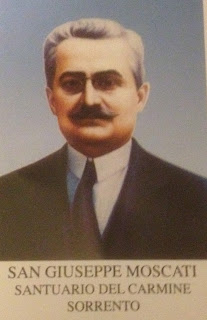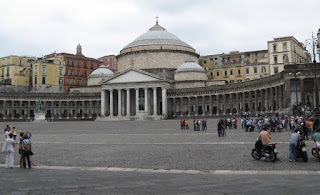 |
| Sanctuary of the Madonna del Carmine overlooks Piazza Tasso |
Doctor and scientist Giuseppe Moscati was beatified by Pope Paul VI on this day in 1975 and his feast day was made 16 November after he was canonised by Pope John Paul II in 1987.
Giuseppe was renowned for his kindness and generosity to his patients and even before his death people talked of ‘miracle’ cures being achieved by him.
The saint was born into a big family in Benevento in Campania in 1880. His father, a lawyer and magistrate, was active in the church and Giuseppe inherited his piety.
The family later moved to Naples and Giuseppe enrolled in the medical school of the University of Naples in 1897.
On graduating he went to work in a hospital but continued with his brilliant scientific research and attended Mass frequently.
When Vesuvius erupted in 1906 he helped evacuate all the elderly and paralysed patients before the roof collapsed on the hospital under the weight of the ash.
He worked tirelessly to research ways to eradicate cholera in Naples and personally cared for many soldiers wounded in the First World War.
He was compassionate to the poor and often gave them money as well as free medical treatment and a prescription.
Giuseppe died suddenly in 1927 at the age of 46 having been on duty at the hospital only that morning.
After his death, a young man dying from leukaemia was suddenly and inexplicably cured when his mother dreamed of a doctor in a white coat. She was able to identify the doctor as Blessed Giuseppe after her priest showed her a photograph. The man, still fit and well, attended the canonisation ceremony of Giuseppe Moscati conducted by Pope John Paul II.
Check out hotels in Sorrento with Hotels.com and venere.com
Home


